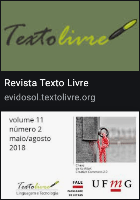
Texto Livre-Linguagem e Tecnologia
Scope & Guideline
Unlocking the Potential of Language in a Digital World.
Introduction
Aims and Scopes
- Digital Literacy and Education:
The journal emphasizes the role of digital literacy in education, exploring how technology can enhance learning experiences and outcomes across various educational contexts. - Technological Integration in Language Learning:
It investigates how different technological tools and methodologies can be effectively integrated into language teaching and learning, facilitating better engagement and comprehension. - Pedagogical Innovations:
The focus is on innovative pedagogical approaches that leverage technology to improve educational practices, including the use of gamification, virtual learning environments, and interactive media. - Multimodality and Communication:
Research in this area examines the use of multimodal texts and communication strategies, reflecting on how various modes of communication (visual, auditory, textual) interact in educational settings. - Social and Cultural Implications of Technology:
The journal also addresses the social and cultural implications of technology in education, including issues of equity, access, and the role of technology in shaping identities and communities.
Trending and Emerging
- Algorithmic Literacy and AI in Education:
There is a growing focus on algorithmic literacy, particularly the implications of AI technologies like ChatGPT on educational practices and student learning. - Use of Digital Tools for Emotional and Social Learning:
Research increasingly explores the impact of digital tools on emotional and social learning, particularly in early childhood education and inclusive settings. - Integration of Multimodal and Transmedia Approaches:
Emerging studies highlight the integration of multimodal and transmedia approaches in education, reflecting a shift towards using diverse media formats to enhance learning. - Critical Pedagogy and Digital Citizenship:
There is a rising interest in critical pedagogy and the role of digital citizenship, emphasizing the need for educators to prepare students for ethical engagement in digital spaces. - Research on Digital Inclusion and Accessibility:
Recent themes have focused on digital inclusion and the barriers faced by marginalized groups, addressing the need for equitable access to educational technologies.
Declining or Waning
- Traditional Literacy Practices:
There is a noticeable decrease in research focused solely on traditional literacy practices without the integration of technology, as the emphasis shifts towards digital competencies. - Static Educational Models:
Research that promotes static or traditional educational models is less frequent, indicating a move towards dynamic, technology-enhanced, and student-centered learning approaches. - Narrow Focus on Local Contexts:
Themes that concentrate exclusively on local educational contexts without considering global or comparative perspectives have been waning, as researchers seek broader applicability of their findings. - Limited Scope of Language Pedagogy:
The exploration of language pedagogy in isolation from technological influences is becoming less common, as the journal increasingly prioritizes the interplay between language and digital tools.
Similar Journals

Language Learning in Higher Education
Pioneering insights into contemporary language education challenges.Language Learning in Higher Education is a prominent academic journal published by DE GRUYTER MOUTON, dedicated to exploring the intricate dynamics of language acquisition and pedagogical practices within the higher education context. With a robust ISSN: 2191-611X and E-ISSN: 2191-6128, this journal provides a platform for innovative research that addresses contemporary challenges and methodologies in language education. The journal enjoys a favorable reputation in the academic community, as evidenced by its ranks in the Scopus database, where it holds a position in the 67th percentile for Language and Linguistics and is classified in the Q3 and Q2 quartiles across relevant education and linguistics categories. Since its convergence in 2017, Language Learning in Higher Education aims to enrich scholarly discourse by publishing high-quality articles that foster insights into effective language learning strategies, thus serving as an essential resource for researchers, educators, and students committed to enhancing language education. The journal's editorial team is devoted to advancing the field through rigorous peer-review processes and welcomes contributions that push the boundaries of language learning research.

Journal of Academic Language and Learning
Bridging theory and practice in language education.Journal of Academic Language and Learning is an esteemed publication dedicated to the exploration and analysis of language use in academic contexts, particularly focused on promoting pedagogical practices and research methodologies that enhance learning outcomes. Published by ASSOC ACAD LANGUAGE LEARNING, this journal serves as a vital resource for educators, researchers, and students seeking to understand the complexities of academic language development. With its strong emphasis on accessibility and engagement, the journal publishes high-quality research that bridges theory and practice, facilitating dialogue among professionals in the field. The journal's comprehensive scope includes topics such as language acquisition, literacy practices, and assessment strategies, making it an integral platform for those committed to advancing academic language learning. While specific impact factors and access options are currently unavailable, its commitment to open discourse ensures that significant contributions to the field are actively shared and disseminated. The Journal of Academic Language and Learning is poised to impact language learning methodologies, equipping its readership with the insights necessary for fostering academic excellence.

ALSIC-Apprentissage des Langues et Systems d Information et de Communication
Unlocking New Horizons in Language Learning and Technology.ALSIC-Apprentissage des Langues et Systems d Information et de Communication, published by ADALSIC, is a premier Open Access journal that has been at the forefront of language learning and information and communication systems since its inception in 1998. With its ISSN 1286-4986, this journal provides a crucial platform for researchers, educators, and practitioners to share innovative findings and pedagogical practices in the interdisciplinary fields of linguistics, education, and technology. The journal invites contributions that explore the dynamics of language acquisition, the effectiveness of communication systems, and the integration of technology in learning processes. By maintaining an Open Access policy, ALSIC ensures that its valuable research is accessible to a global audience, promoting collaboration and knowledge sharing among scholars and professionals dedicated to enhancing language education and communication methodologies. As an inclusive journal based in Strasbourg, France, it plays a vital role in shaping current discourse and advancing research in its field.
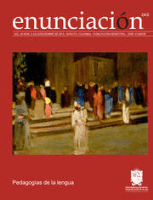
Enunciacion
Sharing knowledge, enriching scholarship, inspiring change.Enunciacion is a prestigious academic journal published by Universidad Distrital Francisco José Caldas, focusing on linguistics, communication studies, and educational research. Since its inception in 1996, this open access journal has been committed to disseminating high-quality, peer-reviewed research that advances scholarship in these fields. The journal is based in Bogotá, Colombia, and serves as a vital platform for scholars, educators, and practitioners to share innovative ideas and findings. With an emphasis on promoting dialogue across diverse cultures and perspectives, Enunciacion plays a crucial role in fostering collaboration and knowledge exchange among researchers. Stay updated with the latest research by exploring its extensive archives, accessible to all. Our commitment is to enrich the academic community and contribute to the ongoing development of linguistics and education worldwide.

Revista Educacao e Linguagens
Elevating research in education and linguistic studies.Revista Educacao e Linguagens is a distinguished peer-reviewed journal dedicated to the exploration and advancement of educational practices and linguistic studies. Published by UNIV ESTADUAL PARANA's Escola de Música e Belas Artes do Paraná, this journal aims to foster dialogue and research dissemination in the fields of education and languages, providing a vital platform for scholars and practitioners alike. With a commitment to quality and relevance, the Revista Educacao e Linguagens encourages submissions that address pressing issues in language education, pedagogical strategies, and interdisciplinary perspectives. While the journal is not currently listed as Open Access, it remains a valuable resource for professionals looking to enhance their theoretical and practical understanding of educational and linguistic phenomena. Through its rigorous editorial process, the journal seeks to maintain high standards of research integrity and scholarly impact, making it an essential read for researchers, educators, and students devoted to improving educational outcomes.
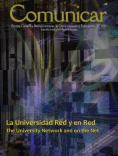
Comunicar
Connecting scholars through open access insights.Comunicar is a prestigious academic journal published by Oxbridge Publishing House, focusing on the fields of Communication, Cultural Studies, and Education. Since its launch in 2002, the journal has operated under an Open Access model, ensuring that research is freely available to a global audience. Based in Spain, Comunicar has established itself as a leading publication, holding a Q1 ranking in 2023 across all its disciplines. It ranks in the top 1% of social sciences journals for Cultural Studies and Communication, and in the top 4% for Education, reflecting its significant impact and reach within these vital areas of study. The journal not only showcases innovative research but also promotes interdisciplinary dialogue, making it an essential resource for scholars, professionals, and students aiming to stay abreast of the latest developments in communication theory and practice.

Language and Literacy
Empowering Educators Through Innovative ResearchLanguage and Literacy is an esteemed journal published by LANGUAGE & LITERACY RESEARCHERS CANADA, focusing on the vital intersections of language acquisition and literacy development. With a commitment to open access since 1999, this journal provides a platform for researchers and practitioners to share innovative findings and pedagogical insights that enhance the understanding of language and literacy in various educational contexts. The journal aims to foster a dialogue among educators, researchers, and policy makers by disseminating high-quality research and facilitating discussions on best practices. Recognized for its contributions to the field, Language and Literacy serves as an indispensable resource for those dedicated to improving literacy outcomes and language education globally. Based in Victoria, BC, Canada, it invites submissions that explore theoretical frameworks, empirical studies, and applied research, thereby enriching the academic community’s knowledge base.
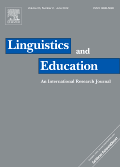
Linguistics and Education
Advancing Knowledge at the Intersection of Linguistics and EducationLinguistics and Education, published by Elsevier, is a premier journal dedicated to advancing the understanding of the intersections between linguistics and educational practices. With its ISSN 0898-5898 and E-ISSN 1873-1864, this journal has established itself as a significant platform since its inception in 1988, continuing to produce impactful research up to 2024. It enjoys a prestigious Q1 ranking in both the Education and Linguistics and Language categories, reflecting its high-quality contributions and leading role in the field. The journal’s Scopus rankings further underscore its influence, being placed in the 87th percentile for Arts and Humanities in Language and Linguistics, and the 86th percentile in Social Sciences in Linguistics and Language. Although it operates under traditional subscription access, its contributions are essential for researchers, professionals, and students alike, making substantial strides in the understanding of language, learning environments, and pedagogical strategies. The journal's objective is to foster interdisciplinary dialogue and disseminate innovative research that informs educational policy and practice.
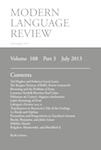
MODERN LANGUAGE REVIEW
Unveiling Contemporary Debates in Humanities ResearchMODERN LANGUAGE REVIEW, published by the Modern Humanities Research Association, is a pivotal academic journal based in the United Kingdom, focusing on the fields of linguistics, literature, and literary theory. With an ISSN of 0026-7937 and an E-ISSN of 2222-4319, this journal serves as a platform for disseminating research that explores the nuances of language and its literary contexts. Although currently not an open-access publication, it provides valuable insight into a range of topics, contributing to a deeper understanding of human communication and expression. Covering a wide scope with a publication history from 2002 to 2024, the journal is indexed in Scopus and holds a Q4 ranking in both linguistics and literature categories, indicating its emerging influence within these academic disciplines. As the landscape of humanities research continues to evolve, MODERN LANGUAGE REVIEW remains a vital resource for scholars, professionals, and students aiming to engage with contemporary debates and developments in language and literature.

Turkish Journal of Education
Unlocking Knowledge: Your Gateway to Educational InsightsTurkish Journal of Education, published by MEHMET TEKEREK, is a prominent Open Access journal dedicated to advancing the field of education research since its establishment in 2012. With an ISSN of 2147-2858, this journal exemplifies a commitment to disseminating high-quality research that addresses contemporary issues and innovative practices in education. It serves as a vital resource for researchers, educators, and policymakers interested in the educational landscape of Turkey and beyond. The journal promotes accessibility to knowledge by offering free access to its articles, fostering a collaborative and inclusive academic environment. By engaging with a diverse range of topics, from pedagogical theories to educational technology, the Turkish Journal of Education strives to contribute significantly to the field and stimulate scholarly debate among its readers.